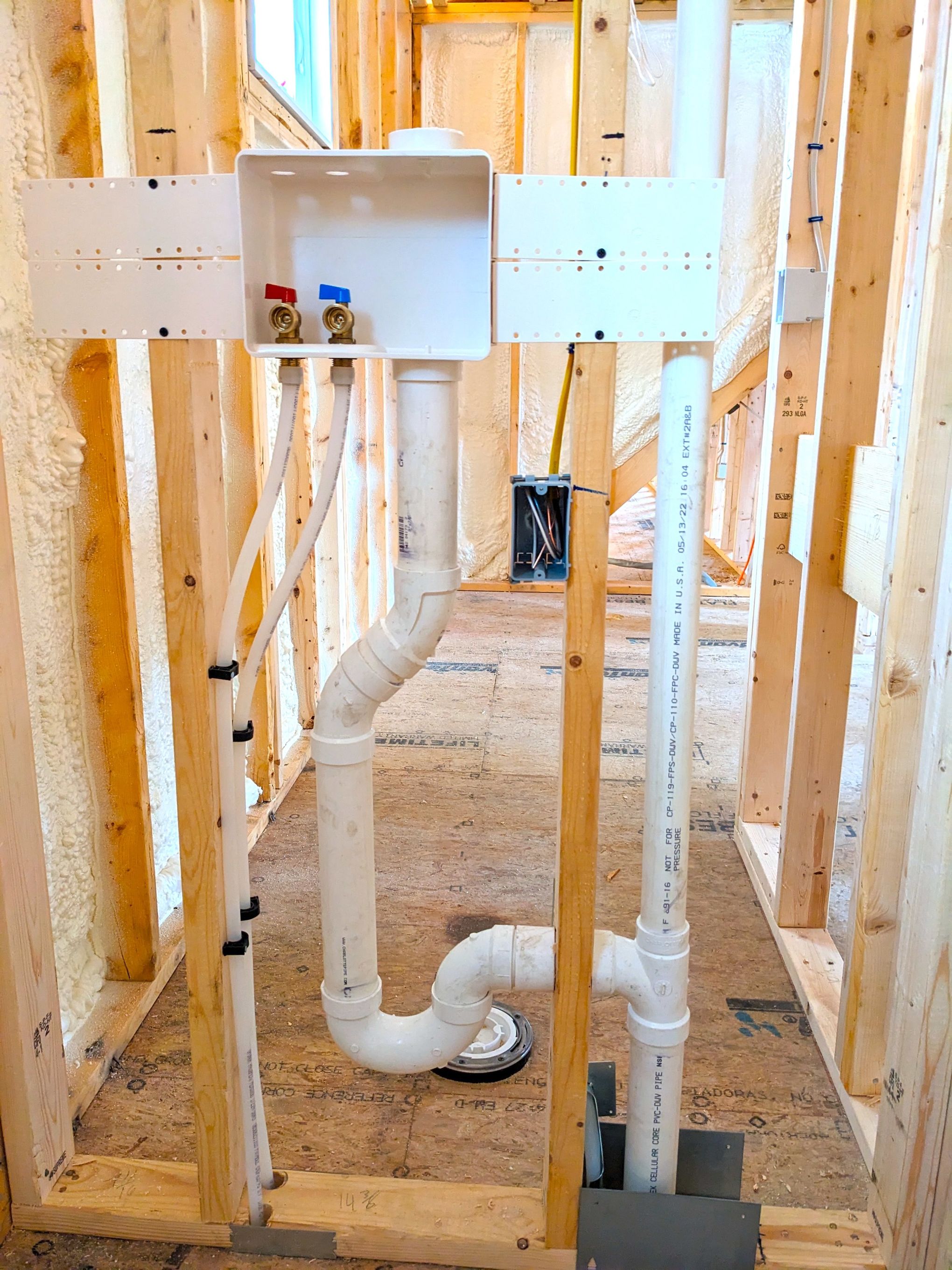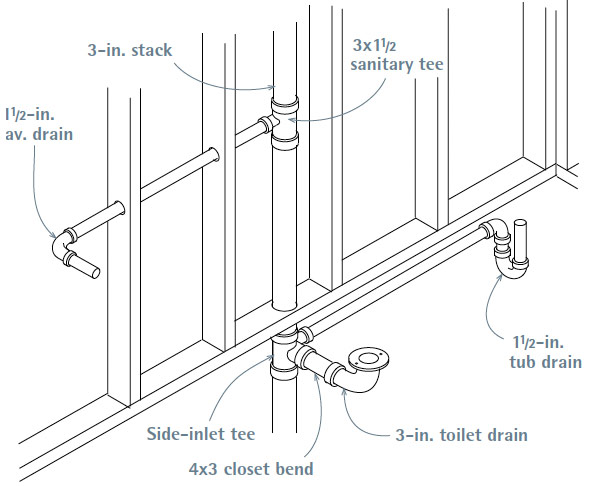Correct Ventilation in Plumbing Systems: How It Matters
Correct Ventilation in Plumbing Systems: How It Matters
Blog Article
What are your thoughts concerning What Is a Plumbing Vent and Why Is It Important?

Proper air flow in plumbing systems is often forgotten, yet it is vital for maintaining the performance and safety of your home's plumbing. Air flow helps regulate atmospheric pressure, protect against the buildup of dangerous gases, and ensure the efficient removal of waste. In this guide, we will discover the relevance of appropriate pipes air flow, just how it functions, and the advantages it gives your plumbing system.
Comprehending Ventilation in Pipes
Air flow in plumbing describes the network of pipelines that permit air to move through the drain system. These vents offer multiple functions, consisting of controling air pressure within the pipes, protecting against sewer gases from going into the home, and aiding in the smooth flow of wastewater.
How Ventilation Works in Plumbing Equipments
Atmospheric Pressure Guideline
Proper ventilation maintains balanced air pressure within the pipes system. When water streams via pipelines, it displaces air. Without ample air flow, this displacement can develop negative stress, leading to reduce drains or siphoning of water from traps, which can trigger undesirable odors to permeate right into the home.
Preventing Drain Gas Buildup
Among one of the most crucial functions of pipes vents is to stop sewer gases, such as methane and hydrogen sulfide, from gathering within the home. These gases can pose severe health and wellness dangers and are extremely combustible. Vent pipes enable these gases to escape safely outside.
Assisting in Waste Elimination
Air flow aids in the reliable removal of wastewater by preventing airlocks in the drainage system. When air can move freely via the vents, it permits water and waste to flow smoothly with the pipelines, reducing the danger of obstructions and backups.
Types of Pipes Vents
Key Heap Vent
The main stack air vent, additionally referred to as the air vent pile, is the primary air vent in a plumbing system. It prolongs from the primary drainpipe line up with the roof covering, enabling gases to leave and fresh air to enter the system.
Branch Vent
Branch vents attach to the main pile vent and serve individual components, such as sinks, toilets, and showers. These vents make certain that each fixture has adequate ventilation to operate correctly.
Air Admission Valve (AAV).
An Air Admission Valve (AAV) is a one-way shutoff that enables air to enter the pipes system without the demand for a typical air vent pipeline expanding with the roof. AAVs are frequently utilized in remodellings or locations where installing a conventional vent is unwise.
Indications of Poor Air Flow in Pipes.
Slow Draining Fixtures.
If your sinks, tubs, or commodes are draining pipes slowly, maybe an indication of poor air flow. Inadequate air circulation can produce a vacuum cleaner impact, making it difficult for water to drain pipes correctly.
Gurgling Appears.
Gurgling sounds coming from drains are frequently a result of air being drawn through water traps as a result of unfavorable stress in the pipes. This is a clear indication of not enough ventilation.
Undesirable Odors.
Drain smells inside your home are a warning that your plumbing system is not appropriately aerated. This can imply that drain gases are not being properly vented outside, causing possibly harmful problems.
Typical Ventilation Errors.
Insufficient Vent Sizing.
Using undersized air vent pipelines can bring about bad air flow and pressure inequalities in the system. It's essential to make use of vents that fulfill the certain requirements of your pipes system.
Improper Vent Positioning.
Placing vents too much from the fixtures they offer can decrease their effectiveness. Proper placement guarantees that air can move freely and efficiently via the system.
Disregarding Code Demands.
Building codes supply particular standards for pipes ventilation. Disregarding these codes can result in a system that stops working to function appropriately and may cause costly repair services or carcinogen.
Benefits of Appropriate Air Flow.
Boosted System Efficiency.
Appropriately aerated plumbing systems run extra effectively, with less blockages, faster draining pipes, and much less pressure on the pipelines. This efficiency prolongs the life-span of the plumbing system.
Improved Air Quality.
By avoiding sewer gases from entering your home, appropriate ventilation contributes to much better indoor air quality, making your living environment healthier and extra comfy.
Stopping Water Damage.
Appropriate air flow aids avoid water from being siphoned out of traps, which can lead to sewer gases entering the home and creating water damage with time.
Steps to Ensure Appropriate Air Flow.
Consulting Plumbing Codes.
Constantly seek advice from local plumbing codes when making or modifying your plumbing system. These codes supply the necessary guidelines for appropriate airing vent and guarantee your system fulfills safety requirements.
Routine Examination and Upkeep.
Normal evaluations can assist determine prospective ventilation problems before they become major problems. Upkeep jobs, such as cleansing air vent pipes and checking for blockages, are essential for maintaining the system in good working order.
Specialist Setup.
For brand-new installations or major adjustments, it's a good idea to employ a specialist plumbing technician. They have the proficiency to ensure the air flow system is properly created and mounted according to code.
Verdict.
Appropriate air flow is a vital element of any type of pipes system, making sure that it operates successfully and safely. By recognizing the value of ventilation, acknowledging the indicators of bad air flow, and taking actions to keep your system, you can stop pricey issues and secure your home's air quality.
Understanding the Role of Your Plumbing Vents in the Drainage System
The plumbing system in your home is more than just the kitchen sink, toilet, and bathroom. Some problems that arise within home plumbing are hard to detect because homeowners may not understand potential causes.
One part of the plumbing system that could cause you endless problems is the venting. The drain lines that run through your home and drain wastewater need proper venting to function properly. Faulty plumbing vents can lead to several problems that require the expertise of a plumber to check them out. Before finding experienced plumbing services, there are a few things to learn about plumbing vents.
Why vents are vital
Vents in the plumbing system lead to an outside area such as the roof or the back. The function of these vents is to keep sewer gases away from the drain pipes. They also establish seals in the drainage pipes that prevent the sucking back of waste gases into the home. Venting in the plumbing system also allows oxygen to get into the drainage system, which is an essential component in the breakdown of waste matter. The vents also ensure that the air pressure within the drainage system remains balanced, facilitating the flow of wastewater.
Possible problems
When the plumbing vents are problematic, one of the consequences is imbalanced water levels in the toilet. If you notice that the levels in the toilet bowl rise and fall all the time, then there may be something wrong with the vents.
Another issue is air bubble formation within the toilet. In most cases like these, the drain pipes are not receiving enough air. Lack of air pressure equalization is what leads to water flow problems. If you come across such issues in your home, make sure you call professional plumbers, such as the ones from Perfection Plumbing & Drain Cleaning Ltd.
Potential causes
Several scenarios can lead to some of the plumbing problems that homeowners suffer because of venting. One such scenario is the use of incorrectly sized vents. Usually, vents are the same size as the drain line to facilitate proper venting. Vents that are too small will lead to some plumbing issues. Another potential cause is fixtures that are not close enough to the vents. In this scenario, air forces itself through the traps of other fixtures, leading to gurgling sounds from toilets and sinks.
Most of these problems also happen with clogged vents. Tree leaves and debris can cause clogging when they make their way down a vent. Unclogging plumbing vents is a service that you can entrust to Saskatoon plumbers. They will know how to snake down vents and remove clogging stuck in fixtures.

As a passionate reader on What Is A Plumbing Vent & How Do They Work?, I think sharing that piece of content was essential. Those who liked our blog post kindly make sure you remember to share it. Thank you for your time invested reading it.
Click For More Information Report this page